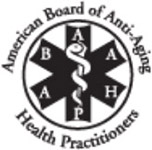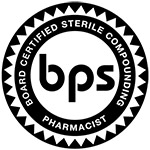
Palliative care is often confused with hospice care, despite their different end goals. Palliative care does not have a specific deadline and focuses on relieving pain and suffering as much as possible. Due to this objective, compounding medicine makes a natural fit for palliative care and can assist with personalized pain relief.
What Is Palliative Care?
Palliative care focuses on providing relief to a patient with a debilitating illness. This specific kind of care, also known as comfort care, ensures that a patient’s quality of life improves by treating and relieving as many of the symptoms as possible. The symptoms that palliative care treats include:
- Fatigue
- Nausea
- Pain
- Difficult breathing
- Insomnia
- Mental or emotional conditions
A palliative caregiver intends to care for the patient for as long as he or she lives. The process can start at any stage of the patient’s condition and has an indefinite timeframe, dependent only on the patient’s health and wishes. However, the patient’s doctor is the one who prescribes palliative care.
Cancer Care
Doctors prescribe palliative care most prominently to cancer patients. Because palliative care focuses more on relieving the patient’s symptoms, treatments such as palliative radiation and chemotherapy are not meant to completely cure cancer, but their purpose is to reduce the patient’s pain. Palliative care is also available to cancer patients who are undergoing traditional treatment. These patients can cope with some of the side effects that occur in during the process, such as:
- Pain
- Thrush
- Nausea
- Fatigue
Other Conditions
Cancer is not the only mortal condition that warrants this care. In fact, most people who receive this treatment tend to live longer than people in regular care. Palliative care can treat the symptoms of a wide variety of conditions such as:
- Liver conditions for itching, nausea, abdominal pain, and swelling
- Heart conditions for breathing difficulties, chest pain, and maintaining fluids
- Breathing conditions for short breath and poor quality of life
What Is Hospice Care?
Hospice care is the treatment of someone’s pain and suffering caused by a debilitating illness. A doctor, or sometimes two, usually approves this type of health care under extreme circumstances and only when the patient has six months or less to live. While hospice care is usually associated with specialized facilities, it is also more frequently available in a standard hospital, nursing home, or – perhaps the most common setting – the patient’s own home. The only requirement is that a certified doctor or nurse performs the hospice care.
There are four different levels of hospice care. A patient can qualify for any of the levels, depending on his or her medical and caregiver circumstances.
Routine Home Care
The most common type of hospice care, provided at home by physicians, nurses, social workers, hospice assistants, or other certified workers and even spiritual guides. Routine home care is standard procedure at nursing homes as well.
Continuous Care
This type of health care is for patients with severe symptoms and pain, including nausea, breathing difficulties, and panic attacks. While the patient remains at home, he or she receives continuous care between eight and 24 hours a day. This type of care is normally short-term and faces revaluation by a physician the next day.
Inpatient Care
Inpatient care treats patients with strong symptoms who need hospitalization. This type of care only addressed short-term symptoms and usually lasts up to five days before dismissal from the hospital. However, there are also hospice units in nursing homes and specialized hospice facilities.
Respite Care
Respite care does not fit any of the other categories and usually takes place in the hospital or another inpatient facility, for up to five days. This type of care is for family members who need a break from taking care of the patient.
Palliative Care Vs. Hospice Care
The crucial difference in hospice over palliative care is the limited time frame. The patient is not expected to live long, so the focus is on relieving the patient’s symptoms until the time arrives. Palliative care also focuses on symptom relief, but without a definite end goal, and there is a chance that the patient will live longer or overcome the disease entirely. Due to palliative care’s objective of caring for a patient’s individual symptoms for a long-term period, the use of a compounding pharmacy is appropriate.
Compounding Medication
The practice of compounding medication allows for pharmacists to create customized medicine tailored to the patient’s needs and choices. Most of the time, these medications combine other medications or separate ingredients to address a patient’s multiple needs in a more efficient manner.
Compounding Medication And Palliative Care
 The use of compounded medications in palliative care is beneficial, because this type of medicine is specialized to an individual patient’s care. Compounding medicine can address a specific patient’s relief needs and care plans and make the caregiver’s job more efficient. While hospice medication only focuses on short-term relief, compounded medicine focuses on long-term care and assumes that the patient will live longer or recover one day.
The use of compounded medications in palliative care is beneficial, because this type of medicine is specialized to an individual patient’s care. Compounding medicine can address a specific patient’s relief needs and care plans and make the caregiver’s job more efficient. While hospice medication only focuses on short-term relief, compounded medicine focuses on long-term care and assumes that the patient will live longer or recover one day.
Compounded medications can bring relief to illness symptoms such as:
- Unrelieved pain
- Neuropathic pain
- Nausea
- Dry mouth
- Excessive salivation
- Seizures
- Thrush
Some of the compounded medications used in palliative care to treat symptoms can come in the form of:
- Extended-release capsules
- Injectables
- Rapid-dissolve tablets
- Topical medications
- Oral rinses
- Troches
- Suppositories
- Transdermal gels
- Lollipops
While palliative care generally improves a patient’s quality of life in a more efficient manner than regular care, it still faces the stigma and association with hospices and the inevitability of death. The use of compounding medicine to assist in customized relief can help in bringing focus to the patient’s long-term care and creating a greater contrast between palliative and hospice care.
Chief Operating Officer, The Compounding Pharmacy of America
Matthew Poteet, Pharm.D. graduated with Honors from Lee University with a Bachelors of Science in Biological Science. After his undergraduate training, he completed the Doctor of Pharmacy program at Mercer University Southern School of Pharmacy, graduating in 2004. Dr. Poteet has spent much of his pharmacy career on staff at two of the most prestigious academic teaching hospitals in the Southeast; Emory University in Atlanta and Vanderbilt University Medical Center in Nashville. At these institutions he received extensive experience and training in sterile products compounding.
He returned home to East Tennessee in 2010, where he has held the position of Pharmacy Director at two sterile products pharmacies in Knoxville. Matthew lives in Knoxville with his wife, Chris. Dr. Poteet is Tennessee’s first Board Certified Anti-Aging Pharmacist by the American Academy of Anti-Aging Medicine.
 Subscribe to Our Newsletter
Subscribe to Our Newsletter


